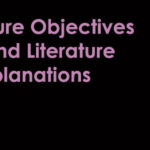Set 6 | Important Indian Music forms MCQs
Important Indian Music forms MCQs. Indian Music forms are an integral part of Indian Art and Culture, which is extremely beneficial for various examinations such as Civil services, State exams, SSC, Railways, Banking and other One day exams. It provides a great opportunity to gain knowledge about the country’s history in order to excel in these competitive fields. Objectives on Indian Art and Culture for competitive exams.
| MCQs on Indian Music forms – Objective Questions and Answers |
Q51. Basant geet folk music and Ghasiyari folk music belongs to which part of India?
[A] Himachal Pradesh
[B] Uttarakhand
[C] Mizoram
[D] Assam
View Explanation
Correct Answer is B.
- Basant geet and Ghasiyari folk music belongs to the Garhwal, Uttarakhand region of India.
- Basant(spring) season is welcomed in a unique manner in Garhwal. Land is filled with different colourful flowers.
- In Ghasiyari geet, young women of the mountains have to go into far off forests to get grass for their cattle. They go to the forest dancing and singing in groups.
Q52. Sukar ke Biah belongs to which region of India?
[A] Punjab
[B] Harayana
[C] Kerala
[D] Bhojpuri region
View Explanation
Correct Answer is D.
- Sukar ke Biah belongs to Bhojpuri region of India.
- Bhojpuri songs portray a lively picture of common folk.
- They give expression to the innermost feelings of simple hearts.
Q53. Villu Pattu folk music and Ammanaivari folk music belongs to which part of India?
[A] Tamil Nadu
[B] Kerala
[C] Andhra Pradesh
[D] Telangana
View Explanation
Correct Answer is A.
- Villu Pattu and Ammanaivari belongs to Tamil Nadu region of India.
- In Villu Pattu folk song, the lead singer also plays the role of the main performer. He also handles the dominating instrument which is bow shaped.
- Ammanaivari songs are sung in praise of the Chola monarch.
Q54. Which Sangeet (folk music) is a blend of Classical and folk music?
[A] Dhammar
[B] Dholak
[C] Sugam
[D] Gana
View Explanation
Correct Answer is C & D.
- There are some devotional songs which contain the elements of both Classical and folk music.
- Sugam sangeet and Gana sangeet are one of them.
- And also Rabindra sangeet and Haveli sangeet are also mix of classical and folk music.
Q55. Who is the famous singer of Dhrupad-Dhamar?
[A] Taj Begum
[B] Sain Malik
[C] Malik Begum
[D] None
View Explanation
Correct Answer is A.
- Taj Begum, disciple of Vithalnath, was the famous singer of Dhrupad- Dhamar.
- She sang the famous Krishna Bhaktidhara in Braj language.
Q56. Oldest evidence of development of music in Uttar Pradesh can be traced back to ?
[A] Post-Vedic Atharveda
[B] Pre-Vedic Samaveda
[C] Post-Vedic Samaveda
[D] Post- Vedic Yajurveda
View Explanation
Correct Answer is C.
- The Oldest evidence of development of music in Uttar Pradesh can be traced back to the post-Vedic Samaveda.
Q57. King of Kaushambi was famous for which instrument?
[A] Sitar player
[B] Veena player
[C] Tabla Player
[D] None
View Explanation
Correct Answer is B.
- The King of Kaushambi was a skilful Veena player.
- He was the contemporary of Lord Buddha.
Q58. Who started the tradition of musical bhajans in temples?
[A] ramanuja
[B] Vithala
[C] Surdas
[D] Vallabhacharya
View Explanation
Correct Answer is D.
- The tradition of musical bhajans in temples was started by Vallabbhacharya.
Q59. Who formed the Ashtchhap?
[A] Vithalnath
[B] Surdas
[C] Kabirdas
[D] None
View Explanation
Correct Answer is A.
- Vithalnath is the son of Vallabhacharya who formed the ‘Ashtchhap’ by including eight poets namely Nand Das, Sur Das, Kumban Das, Chaturbhuj Das, Parmanand Das, Chheetswami, Govind Swami and Krishna Das.
Q60. Who invented the Sitar and Tabla?
[A] Ashoka
[B] Amir Khusrau
[C] A & B
[D] None
View Explanation
Correct Answer is B.
- Amir Khusrau was a renowned musician who invented Sitar and Tabla.
- He promoted ‘Khayal Gayan’ including Persian music and Dhrupad music art in it.
- Through Khayal Gayan Art, Indian music was divided into two parts namely Hindustani and Carnatic.
- Grandson of Amir Khusrau – Masit Khan promted the playing style of Sitar.


